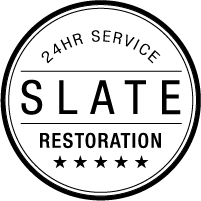How to Spot Hidden Mold in Your Home
Mold isn’t just an eyesore—it’s a serious health risk and a threat to your home’s structural integrity.
While visible mold is easy to identify, hidden mold often thrives unnoticed in places like walls, ceilings, under flooring, and inside HVAC systems. Catching it early can save you significant time, money, and stress.
This guide will help you uncover hidden mold by outlining the warning signs, common hiding spots, tools for detection, and preventive measures. Stay ahead of the problem and protect both your home and your family’s health.
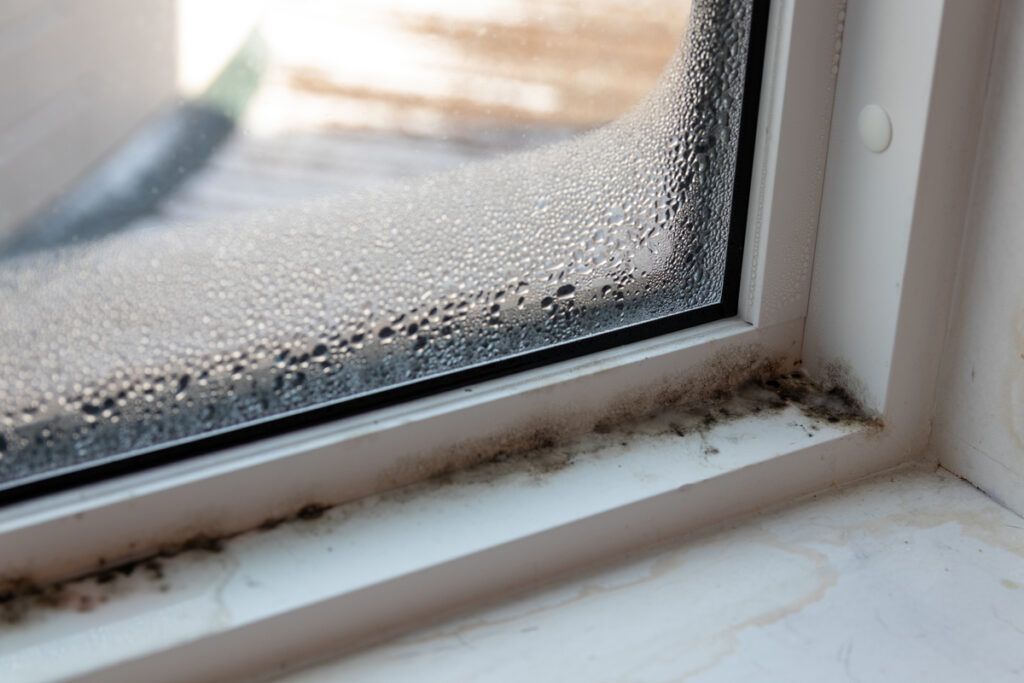
The Importance of Early Mold Detection
Mold spores are microscopic and thrive in damp, dark environments. By the time you notice visible growth, the infestation may already be extensive.
Mold often takes hold after water damage caused by flooding, leaks, or poor ventilation. Even in dry climates like Arizona, moisture from monsoon storms, plumbing issues, or AC condensation can create the perfect conditions for mold to flourish.
- Failing to address mold early can lead to serious consequences, including:
- Structural damage to wood, drywall, and insulation
- Lingering musty odors that seep into fabrics and furniture
- Worsening allergy and asthma symptoms
- Escalating remediation costs as the problem spreads
Taking swift action at the first sign of hidden mold can help protect your home, save money, and safeguard your health. At Slate Restoration, we know how critical it is to act fast. Our team uses advanced inspection tools to detect hidden mold early, preventing costly damage and protecting your family’s health.
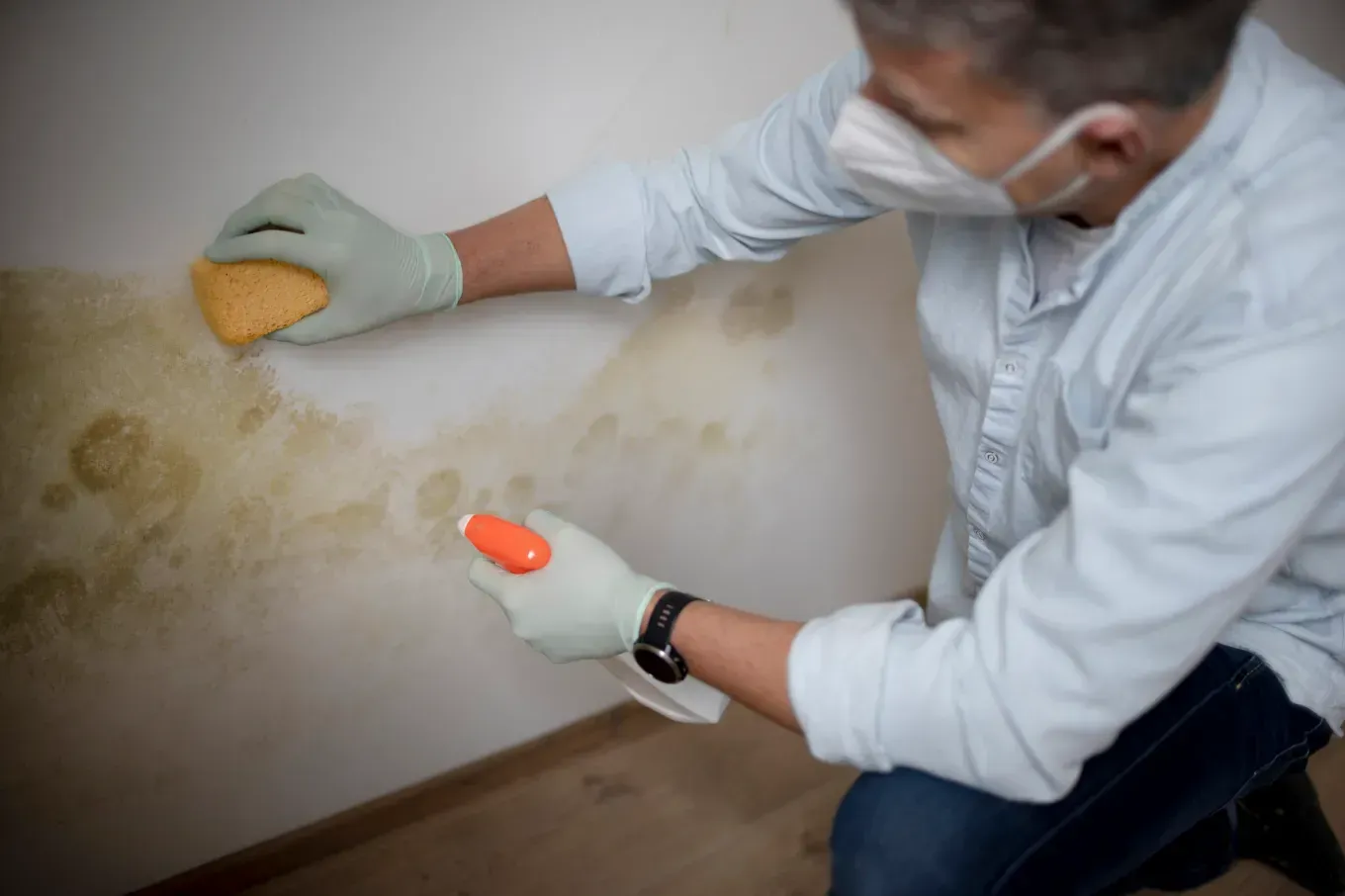
Signs of Hidden Mold in Your Home
Detecting hidden mold requires a keen eye for subtle changes in your environment. Watch for these common warning signs:
Persistent Musty Odor
An unpleasant, damp, or earthy smell that doesn't go away, even with regular cleaning, often points to mold growing behind walls, under floors, or in other hidden areas.
Unexplained Health Issues
If you’re experiencing frequent coughing, sneezing, itchy eyes, or worsening asthma symptoms while indoors, mold spores in the air could be the culprit.
History of Water Damage
Even after repairs, past incidents like flooding, roof leaks, or plumbing problems can leave behind trapped moisture—creating an ideal environment for mold to develop.
Stains or Warping
Discolored spots—yellow, brown, or green—on walls, ceilings, or floors may suggest mold beneath the surface. Similarly, warped drywall or buckling floors are strong indicators of hidden moisture.
Excess Condensation
Noticeable moisture on windows, pipes, or walls signals high humidity levels, which promote mold growth over time.
Stay vigilant for these signs to protect your home and health from the hidden dangers of mold. If you notice any of these signs, Slate Restoration can provide a thorough inspection using advanced detection tools to uncover and remove hidden mold before it causes serious damage.
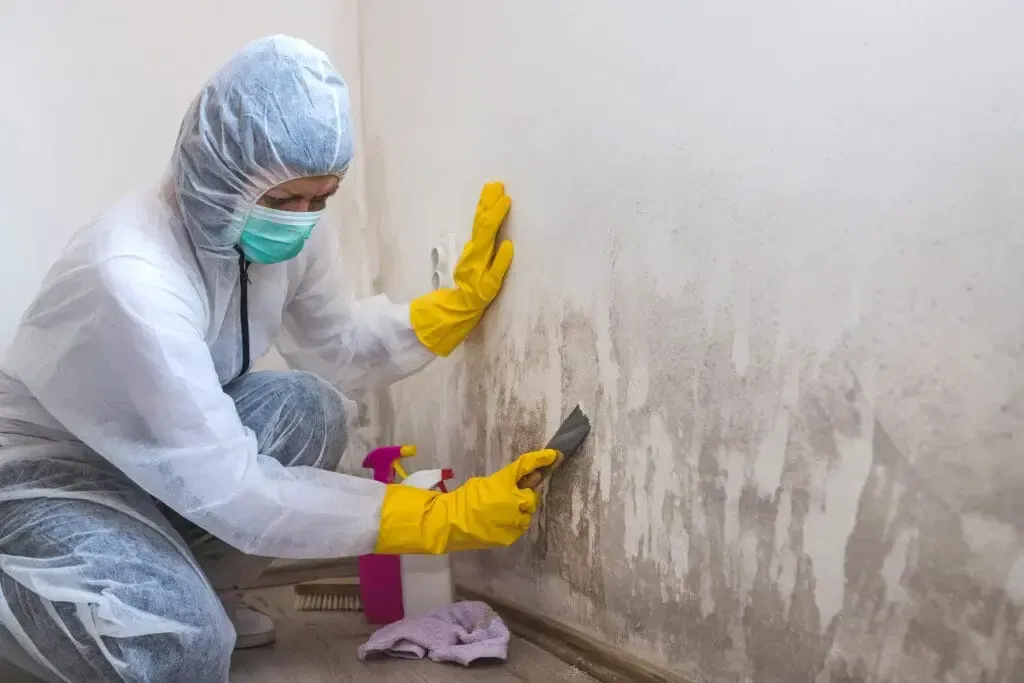
Essential Steps to Detect Hidden Mold in Your Home
Hidden mold can pose serious risks to both your home and health. Identifying it early is key to preventing its spread and mitigating potential hazards. Here’s a guide to help you uncover hidden mold and protect your space:
1. Follow Musty or Earthy Odors
A strong, musty smell is often the first clue of hidden mold. As mold grows, it releases microbial volatile organic compounds (mVOCs), creating that distinct odor.
If the smell intensifies in specific rooms or when opening cabinets or closets, the mold may be lurking behind walls, under flooring, or in other concealed areas.
Pro Tip : Don’t cover the smell with air fresheners. Instead, trace it to the source by checking corners, baseboards, and hidden spaces behind furniture.
2. Spot Discoloration or Stains
Mold may not always be visible, but it often leaves behind telltale marks, such as:
Brown, black, or green stains on walls and ceilings
Yellowish spots from water damage
Dark patches on wood or other surfaces
Discoloration is a red flag that moisture has been present long enough to create an ideal environment for mold growth.
3. Watch for Bubbling or Peeling Paint
Moisture that gets trapped behind paint or wallpaper can cause peeling, bubbling, or cracking. While some of this might be normal wear and tear, in damp areas such as bathrooms, kitchens, or near windows, it can be a red flag for hidden mold.
Poorly ventilated, humid spaces are prime locations for mold growth. Ignoring these early signs can allow the problem to spread, leading to costly repairs and potential health risks. Slate Restoration specialises in identifying the source of moisture, removing mold at its root, and restoring affected areas to prevent future outbreaks.
4. Check for Warped or Soft Materials
Wood, drywall, and laminate surfaces can warp, bulge, or soften when exposed to moisture. Gently press on suspicious areas—if they feel spongy, soft, or crumble easily, mold may be growing underneath.
Catching these signs early can help prevent extensive damage and costly repairs.
5. Pay Attention to Your Health
Your body can often alert you to mold before you see it. If you notice persistent allergic reactions or respiratory issues that improve when you leave home, mold could be the culprit. Common symptoms include:
- Sneezing, coughing, or nasal congestion
- Itchy or watery eyes
- Worsening asthma or breathing difficulties
- Frequent headaches or fatigue
If these symptoms align with signs of water damage, it’s worth investigating for mold.
6. Inspect High-Moisture Areas
Certain areas in your home are more prone to mold due to increased moisture and poor ventilation. Regularly check these high-risk spots:
- Bathrooms : Behind tiles, under sinks, inside vanities, and in grout.
- Kitchens : Beneath sinks, around dishwashers, and behind refrigerators.
- Basements and Crawl Spaces : Near sump pumps, foundation cracks, or damp walls.
- Attics : Around roof leaks, damaged insulation, or poorly ventilated areas.
- Laundry Rooms : Behind washing machines or anywhere condensation builds up.
These spaces are often overlooked during routine cleaning, making them ideal for hidden mold growth.
7. Use a Moisture Meter
A moisture meter is a valuable tool for detecting dampness in walls, floors, or ceilings before visible damage occurs.
Affordable and easy to use, moisture meters provide precise readings, helping you identify areas where mold could develop. Elevated moisture levels in a specific spot warrant further investigation.
8. Examine HVAC Systems
Mold thrives in HVAC systems, particularly in ducts, air handlers, and vents where condensation collects. Warning signs include musty odors when the system runs, visible mold on vents, or worsened allergies when using heating or air conditioning.
Regular maintenance, like cleaning ducts and replacing filters, can prevent mold buildup and improve indoor air quality.
9. Check for Water Damage
Recent water damage, such as flooding, roof leaks, or burst pipes, can create hidden pockets of moisture in materials like drywall or wood. Even if the surface appears dry, moisture can remain trapped for weeks, fostering mold growth.
After any water damage, thoroughly inspect the area and consider professional drying services to prevent future issues.
10. Consult a Professional
If you’ve noticed signs of mold but can’t pinpoint its source, it’s time to bring in the experts. Slate Restoration uses advanced tools like infrared cameras, air sampling, and comprehensive inspections to detect hidden mold—even in the most hard-to-reach areas.
Our team will confirm its presence, identify the mold type, and create a customised removal plan to protect both your home and your health for the long term. By acting quickly and trusting experienced professionals, you can maintain a healthier indoor environment and safeguard your property from costly hidden damage.
By staying vigilant and addressing these potential mold indicators, you can maintain a healthier environment and safeguard your home from hidden damage.
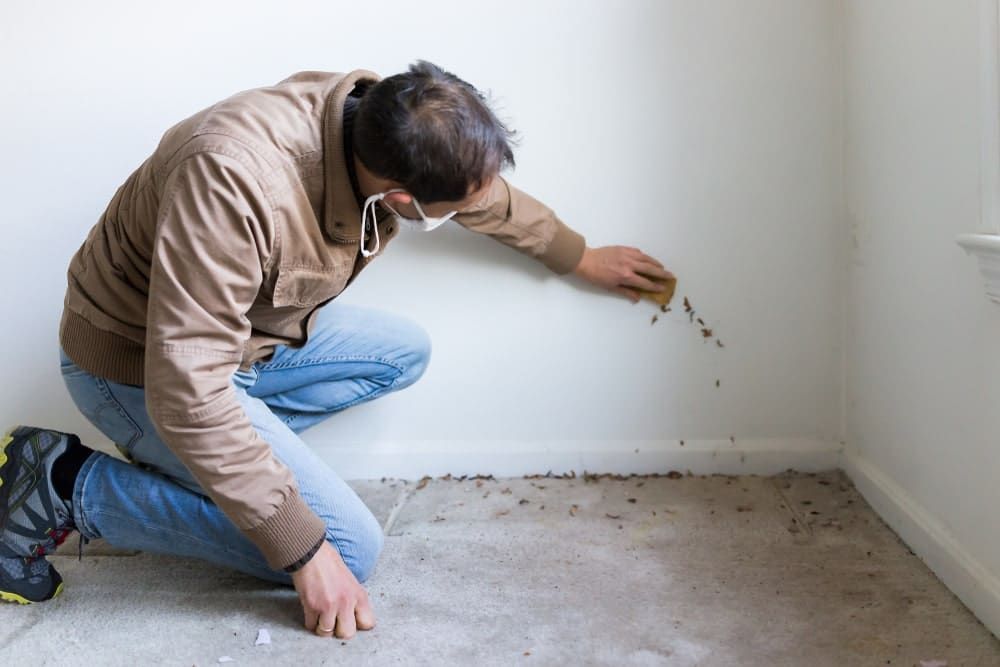
The Risks of DIY Mold Testing and Removal
Many homeowners try to handle mold problems themselves using store-bought kits or cleaning products. While this may seem like a cost-saving solution, it rarely addresses the root cause—leading to repeated mold outbreaks.
Key Risks of DIY Mold Detection and Cleanup:
- Incomplete removal, allowing mold to return quickly
- Unintentionally spreading spores to unaffected areas
- Exposure to harmful mold species without proper protection
- Overlooking hidden moisture sources that keep mold growing
At Slate Restoration, we provide safe, thorough mold inspections and remediation that tackle both the visible mold and the hidden factors causing it. Our proven process ensures long-term results and gives homeowners peace of mind knowing the problem is fully resolved.
Cost of Mold Inspection and Remediation
The cost of mold remediation depends on factors such as the size of the affected area, location, and type of mold
On average, a professional inspection may range from $300 to $600. Small-scale remediation typically costs between $500 and $1,500, while extensive remediation can exceed $10,000. Addressing mold issues promptly is crucial to minimizing expenses.
In some cases, homeowners’ insurance may cover mold remediation if it results from sudden water damage. It’s advisable to review your insurance policy to determine if such coverage applies to your situation.
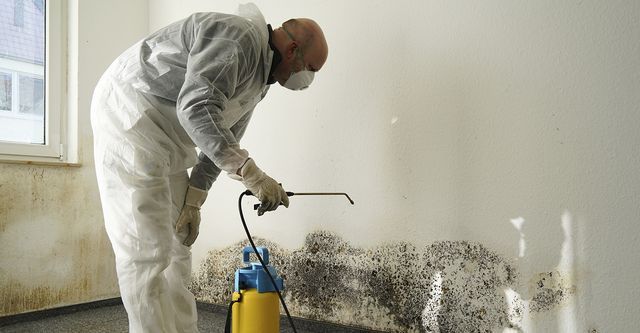
Tips to Prevent Hidden Mold Growth
The best way to deal with mold is to stop it before it starts. Here’s how you can stay ahead:
- Keep indoor humidity in check: Aim for levels between 30–50% using a dehumidifier.
- Address leaks immediately: Whether it’s a plumbing issue, a roof leak, or drafty windows, fix them promptly
- Ensure proper ventilation: Use exhaust fans in bathrooms and kitchens to clear out excess moisture.
- Maintain your HVAC system: Regular cleaning and upkeep can prevent mold-friendly conditions.
- Inspect after storms or floods: Check for potential damage or moisture build-up early to avoid larger issues.
For extra protection, Slate Restoration offers professional inspections that can detect moisture or mold risks before they escalate—saving you costly repairs later.
Choose Slate Restoration for Expert Mold Detection and Removal in Mesa
At Slate Restoration, we understand how dangerous hidden mold can be to your home and health. That’s why homeowners in Mesa trust us for thorough inspections, safe remediation, and lasting results.
Here’s why we’re the right choice:
24/7 Emergency Service: Immediate response to mold emergencies, day or night.
Locally Owned & Operated: We know the unique challenges Mesa homes face.
Certified Mold Remediation Experts: IICRC-certified technicians using industry-approved methods.
Comprehensive Service: From inspection to full removal and prevention strategies.
If you suspect mold in your home, don’t wait. Call Slate Restoration today for a free, professional inspection and protect your home and family.
FAQs
What are the signs of hidden mold in your house?
Visible signs include dark spots on bathroom tiles, shower tiles, ceiling tiles, or exterior walls. A musty odor, health symptoms like a runny nose, or worsening respiratory problems may also point to a mold problem.
What causes mold indoors?
Mold in your house thrives in moist environments caused by water leaks, plumbing leaks, leaky pipes, or improper ventilation. Cold surfaces and high indoor humidity levels can also encourage mold growth on porous materials and dead organic matter.
How can I find hidden mold?
If you suspect hidden mold but can’t find mold, hire a professional mold inspector to detect airborne mold spores in air ducts or behind walls.
How can I prevent and remove mold promptly?
Mold prevention includes fixing leaks, using air conditioners to monitor humidity levels, and mold cleanup with rubber gloves to safely remove mold. For large infestations, call mold removal experts to avoid toxic fumes and health effects.
Conclusion
Hidden mold can silently harm your home’s safety, structure, and your family’s health. By spotting early signs like musty odors, stains, or unexplained health issues, you can act quickly before it worsens. Regular inspections, moisture control, and timely repairs are key to prevention.
While DIY methods may seem tempting, professional detection ensures thorough removal and long-term protection. Slate Restoration in Mesa offers expert services with advanced tools, certified technicians, and proven strategies to eliminate mold at its source.
Don’t ignore the signs—addressing mold early saves money and protects your family’s well-being. Get a professional inspection and targeted remediation today.
